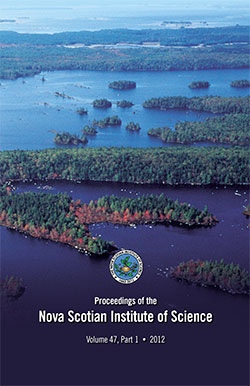BEACHED BIRD SURVEYS ON SABLE ISLAND, NOVA SCOTIA, 1993 TO 2009, SHOW A DECLINE IN THE INCIDENCE OF OILING
DOI:
https://doi.org/10.15273/pnsis.v47i1.3378Abstract
Sable Island, located about 160 km southeast of the landmass of NovaScotia, Canada, is far offshore and provides a platform for beach surveys
to monitor oil pollution in Scotian Shelf waters. Sporadic beach surveys
conducted there during the 1970s and 1980s indicated that oiled birds and
beached tar were common occurrences. During a survey program from
January 1993 to December 2009, more than 10,800 bird corpses were
found in 171 surveys covering a total of >13,500 km of shoreline. Sixtyfour
species were recorded, of which 52 were seabirds and waterfowl.
The numbers of beached birds and species composition exhibited large
fluctuations, which reflected both the seasonal distribution of species and
the effects of weather and beach conditions. The oiling rate of corpses
for all seabirds and waterfowl combined was 28.6%, and ranged from a
high of 69.9% in 1996 to a low of 1.4% in 2009. Alcids had the highest
rates of oiling (averaging 54.3%), while lower rates were observed for
shearwaters (1.9%) and Larus gulls (2.4%). The results of the 1993-2009
surveys, as well as those of earlier studies in the 1970s and 1980s, indicate
a declining trend in the oiling rate of beached birds on Sable Island.
Keywords: oil pollution, marine pollution, seabird oiling rate, beached
bird survey, Sable Island


